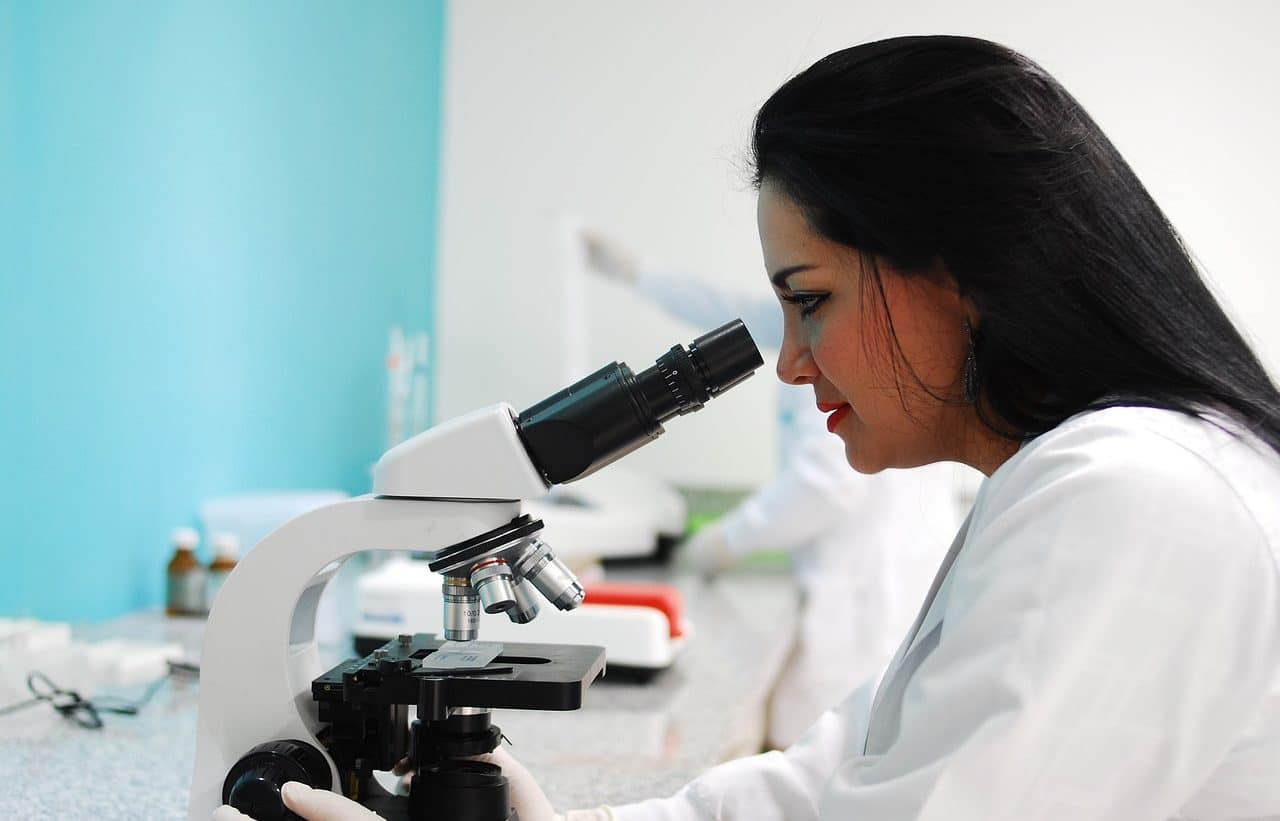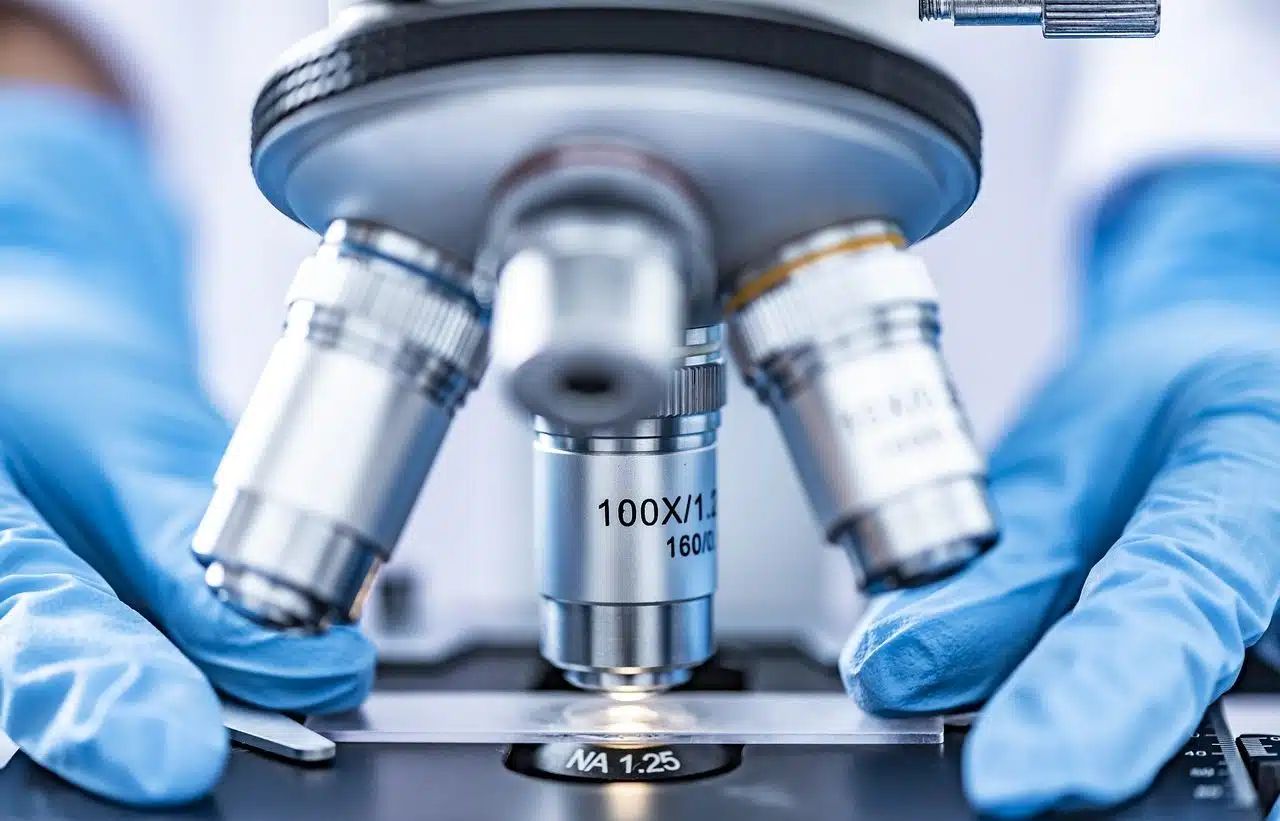
Electron microscopy draws on, for example, the transmission electron microscope and the scanning electron microscope.
The electron microscope is a technological device that offers images of small elements using electrons for its operation, and not visible light or photons . This particularity allows greater amplifications to be achieved with these devices compared to those achieved with an optical microscope .
This invention, the first version of which was carried out by Max Knoll , Bodo von Borries and Ernst Ruska , is useful for appreciating the ultrastructure of various organisms and elements such as metals , tissues , cells , viruses , etc. (with the sweeping ones, in particular, It is possible to scan the surface of a microorganism ). It is also worth mentioning that these microscopes are used to carry out failure analysis and quality controls, for example. They are also useful for studying integrated circuits .
It cannot be overemphasized that this device, specifically the transmission electron microscope , is an excellent resource in cases in which it is not possible to implement the technique known as X-ray crystallography . In this situation, with the intention of establishing how the atoms are arranged in a certain solid, electron crystallography is used. Through the practice of transmission electron microscopy, the study of electron tomography (or cryotomography , framed in the modality of cryoelectron microscopy ) is carried out, which requires that the preparation be frozen in conditions that facilitate the vitrification process.
Electron Microscope Features
The electron microscope has a series of characteristics that differentiate it from the rest of the devices of its style.
Although several scientists are mentioned when reconstructing the origins of this device, there is no unanimity or absolute certainty when it comes to pointing out the person first responsible for the development of the transmission electron microscope , for example. Bodo von Borries , Ernst Ruska and Max Knoll are admitted as key figures. If patent records are considered, then Reinhold Rüdenberg is recognized as the creator of the electron microscope , just as Manfred von Ardenne is credited with having been the creator of the scanning electron microscope . Over the years, each variety was improved and evolved.
Today, experts benefit from more precise studies because a transmission electron microscope equipped with advanced optics accepts up to two million magnifications.
A vacuum chamber , electromagnetic lenses , a filament (usually tungsten ), an electron source , and a fluorescent screen or photographic plate are the essential components of electron microscopes .

Electrons are essential for the operation of electron microscopes.
Advantages and limitations
Modern electron microscopes , although they have some limitations in certain versions, provide multiple advantages and possibilities to researchers. With one of them, to describe a specific case, a group of scientists was able to observe in high resolution details of a meteorite named Winchcombe . This device is ideal for focusing on compounds that have a high carbon content and viewing them in atomic resolution .
It is also enriching to know that, in the Argentine city of Rosario , the CONICET Scientific and Technological Center has come to provide services focused on scanning electron microscopy . Thanks to it (and to the electron source installed in the equipment) a highly zoomed image is displayed without loss of resolution or sharpness, it is possible to examine biological samples and it is possible to take advantage in practice of the method based on electron diffraction by backscatter .
In Santa Cruz de Tenerife , to indicate another reality, the University of La Laguna announced the incorporation of a high contrast transmission electron microscope to its General Research Support Service (SEGAI) area.
As for disadvantages, the restricted aperture, aberrations associated with the lenses and the need to prepare the samples in advance in order to guarantee their fixation and that they are under vacuum appear as points to improve in certain devices.

Electron microscopy makes it possible to analyze all kinds of particles and characterize nanomaterials, for example.
Types of electron microscope
When searching for information about the different types of electron microscopes that have been developed throughout History, two main categories come to light.
One of them reports the existence of, for example, transmission electron microscopy (TEM) equipment. This type of instrument that requires sample cutting into finite layers is capable of enlarging an image up to a million times.
The other important variety feeds into the scanning electron microscopy (SEM) modality, which works on a sample that is covered with a thin mantle of metal and scanned with electrons fired from a type of cannon.
Scanning tunneling microscopy (STM) , field emission microscopy (FEM) and field ion microscopy (FIM) devices have also been designed. Nor should we overlook the techniques and technologies focused on atomic force microscopy (AFM) , focused ion beam microscopy (FIB) and reflection high energy electron microscopy (RHEED) , among others.
